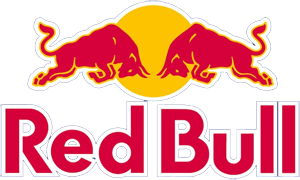New Year’s Tips for Ice, ability gains.
Date: 1st January 2011
Ice Tips:
-Carry more “short” ice screws. The standard rack here in the Rockies used to be a batch of 21cm or longer screws. Now the vast majority of my screws are 13cm, with a few stubbies if needed and one 21cm screw for V or A threads (I don’t think it matters much which one you use really). Clear the surface ice to get to good ice and a
13cm BD is as strong as a longer screw or close enough it doesn’t matter. Longer screws tend to hit rock and are then ever the same again; it’s far better to use a “too short” screw than one that’s too long. If I could only have one screw size it would be the 13cm.
-Dig hard to get to good ice for screws. A few days ago I set up a belay in a spot where a lot of other people had done the same; in my opinion almost every screw at that belay station was junk, I broke an “onion” skin off that was 15 cm thick and riddled with holes. In my view many if not most ice climbers don’t do enough clearing to get good screws, especially at belays. This is likely what led to a recent situation w
here three of the four ice screws in the system blew. Clear yer ice, get something undeniably solid or don’t bother with the screw.
-Push on the ice with both your hand on your lower tool and by taking your hand off the tool and pushing on the ice to balance, just like rock. I do this a lot, it’s intuitive now, but as I teach and coach I remember it’s not obvious until it’s learned. The long head of my triceps always gets sore from pushing when climbing ice, along with the lats… If you think about rock climbing you’ll probably remember all the pushing you do to move up, not just the pulling. Ice is the same, if one hand is pulling the other is pushing on the lower tool or ice…
-Good rock climbers can learn to climb ice a lot faster than good ice climbers can learn to climb rock. I attribute this to the fact that rock climbers already have the fitness, and just require motion training, while most ice climbers are relatively weak. But, while a rock climber can learn to get up about any ice climb in a season or two, just getting up a climb does not mean doing it well. I have seen reasonably competent rock climbers move with glacial speed on what for a good ice climber is 5.5 terrain. I think the real artistry and style of ice climbing is not in just getting up a pitch, but doing so quickly and securely. It’s like running–anyone can run a mile, but it’s another thing to do it in under five minutes… I would rather see someone climbing well below their max but in total control than someone pushing it on ice, not worth it.
-I’m seeing more and more people top-roping and working on their skills in Haffner and other places. This is great!
-If you don’t have a good placement don’t pull up on it. The situation will not improve. Make good placements, which are pretty much always possible. I see so many climbers get shallow placement and then pull up on it anyhow, which leads them to place the second tool at the same level as the poor placement.
-Don’t yell “ICE!” unless things are getting really western and someone is clearly in danger. This isn’t sport climbing, ice is going to fall off all the time, and the shout of “ice” loses its effectiveness rapidly if everyone is yelling ice for every little bit of falling water.
Performance Gains:
I’ve been out whacking icicles, dirt and rocks a lot the last few weeks, finally seeing some decent performance gains. My real fitness level likely hasn’t changed more than a few percent in the last couple of weeks after the training base I laid down (I managed to train on the broken finger, but that delayed its healing some) over the last few months, but I’m climbing a ton better. Why?
Because most of the initial rapid gains that occur in the gym or in the real world aren’t due to strength development but to better movement patterns, better muscle recruitment and more confidence. If you’re an athlete who has taken a break for whatever reason and come back to the sport, even years later, you can get back to your top ability relatively quickly if you haven’t gained 50 pounds and/or turned into a complete slob. This is more true for technique sports (climbing, kayaking, mountain biking, skiing, anything fun) than more pure endurance sports (road biking and road running, anything involving Lycra and toxic levels of repetitive suffering), but for all these sports the road back to performing well is a lot faster than pure physiological improvement would indicate.
Even on a “pure strength” movement like the bench press the athlete who has bench pressed at least his or her own bodyweight will get back to that level a lot quicker from the same relative fitness level than the novice who has never benched. Old-time coaches used to call this “muscle memory,” and while muscles don’t remember anything it’s still a decent term compared to the fancy sounding “neurological recruitment.” So my gains are less due to an improving fitness level than to having done a lot of work in the past, and now reactivating that mothballed programming.
This relates to New Year’s in the following manner: If you were once any good at something and make a resolution to get better at it again then you can, and faster than you thought possible. Those years of training and conditioning are still in there; gains will be speedy! Of course you’ll plateau eventually, but the barrier to getting truly good again at something you once loved is lower than many think. The pain level, on the other hand, is just as high as ever.
And Happy New Year!
Posted in: Blog
Comments
Add a comment
I'm more than happy to hear your thoughts on what I've written. Please note that all comments will be moderated before publishing. Thank you for joining the conversation.



